
After a century of astonishing advances, essential medicines still remain beyond the reach of an estimated one-third of the world’s population. Penn Dental’s Henry Daniell could be on the cusp of changing that.
BY TREY POPP | Photography by Candace diCarlo
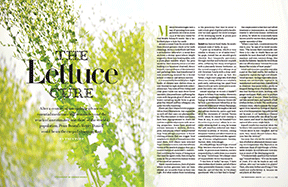
Medical breakthroughs have a way of sprouting from unexpected soil, but even so, Room 123-A of the Levy Center for Oral Health Research seems like a far-fetched place to look for seeds.
Around a corner from the atrium where Penn Dental patients check in for teeth cleanings, down a cinderblock hall from a periodontics laboratory, a metal door encloses a skinny space whose length suggests a three-lane bowling alley, with a plate-glass window where the pins would be. Until recently it was a corridor leading to a basement stairwell. Henry Daniell, a new professor of biochemistry and pathology here, has transformed it into something unusual for a dental school: a tobacco and lettuce nursery.
It is an austerely beautiful place. Eight banks of chrome-wire shelves shine in cool fluorescent light mixed with reflected sunrays. Tidy rows of Petri dishes and clear glass cubes line each three-tiered assembly, like jewel boxes suffusing the room with the green glow of shoots and leaves sprouting inside them—a green glow that Daniell and his colleagues are, quite literally, hijacking.
Plants get their characteristic pigmentation from chloroplasts, tiny organelles in each cell that carry out photosynthesis. The chloroplasts in these specimens have been reprogrammed to churn out custom-engineered proteins with amazing properties. Some have rendered rodents immune to malaria, cholera, polio, and plague. Others have protected dogs from allergic reactions to blood-clotting proteins that can trigger fatal anaphylactic shock in hemophiliacs who need them. Still others have reversed Type I diabetes in mice, and cleared brain tissue of the amyloid plaques that are a central feature of Alzheimer’s Disease—first scrubbing the brains of living mice that took the agent orally, then doing the same in the postmortem human brains of deceased AD patients.
These transformations, born of plants whose nuclear genomes have not been altered, are scientific feats in their own right. But what makes them tantalizing is the possibility that they’re about to yield a holy grail of global public health: oral vaccines against the worst scourges of the developing world, at prices poor people can actually afford.
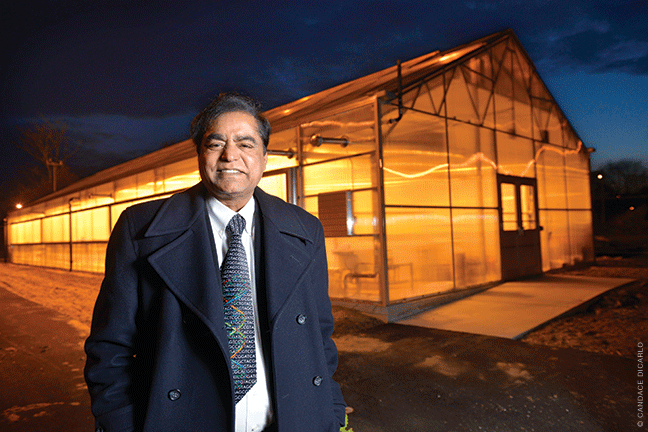
Daniell was born in Tamil Nadu, the southernmost state of India, in 1952.
“I grew up in Madras, which is very similar to Miami—a lot of palm trees,” he quips. Daniell has an amiably goofy chuckle that frequently percolates through chitchat and technical shoptalk alike, softening his sharp intelligence with a pleasantly breezy bonhomie. As the second youngest of 12 siblings in an old Christian family with a deep intellectual streak, he grew up fast. His father, a high court judge who died when Henry was young, set him on a scholarly path early, subtracting two years from Henry’s official birth certificate to accelerate his entry into school.
Daniell would go on to earn a master’s degree in botany from Madras University at 19. After completing a doctorate in microbiology at Madurai Kamaraj University, he took a postdoctoral fellowship at the University of Illinois at Urbana-Champaign, and never looked back. He taught at Harvard and Auburn University, and in 1998 landed at the University of Central Florida (UCF), where he stayed until coming to Penn in 2013. In 2002 he founded Plant Biotechnology Journal, where he is currently editor-in-chief. In 2004 he became the 14th American inducted into Italy’s National Academy of Science, joining Benjamin Franklin and Albert Einstein on a membership roll that reads like a genealogy of human enlightenment: Faraday, Pasteur, Bohr, Schrodinger.
His elder siblings, by and large, returned from Western educations to live close to home. “It gave me more freedom, and less responsibility, to settle down in a country far away,” Daniell says. Yet a deeper sense of responsibility drives his research.
“I was born in India,” he says. “I have seen children die of cholera, and all of these other preventable diseases. I mean, I saw them die. And still they die. So I’ve always questioned: Why is it that they’re dying?”
The simple answer is that they can’t afford treatment or immunization. As a frequent traveler to infectious-disease conferences in Africa, for which he occasionally bares his own arm for vaccine shots, Daniell gets regular reminders of this.
“When I come back, I receive invoices for over $1,000,” he says of his travel inoculations. “The income that’s reasonable over there is $2 a day. So clearly these are not available for more than half of the global populace. And even common things—like insulin for diabetes—here [in the West] those who can afford it take it. But even those are beyond the income of most people.”
Greed and economic injustice may play a part in this hard reality, but neither is required to explain the high cost of traditional vaccines. Syringe-injectable inoculations are intrinsically expensive to manufacture and distribute. Daniell likes to illustrate this point with a photo he snapped during a tour of a massive stainless-steel bioreactor suite, bristling with gauges and pipes, that’s used to produce a single type of vaccine. These facilities can take several years, and upwards of half a billion dollars, to build. The purification columns alone, which separate the target agent from hazardous biological byproducts of its fermentation—typically carried out by yeast, E. coli bacteria, or Chinese hamster ovarian cells—run about $10 million apiece, and must be discarded and replaced after every single batch.
Daniell recalls his reaction when the facility’s CEO mentioned that last part: “I knew about it, but I laughed. And he said, ‘Hey, Henry doesn’t believe this. Give him the invoice!’”
Vaccines that rely on the sterile injection of killed or attenuated disease-causing microorganisms also depend on an unbroken chain of cold storage—a formidable obstacle to cost-efficient distribution in much of the developing world.
“I fundamentally question this technology,” Daniell declares. “If it can be made in yeast, if it can be made in any cell culture, why can’t we make it in plants? Then, why even bother purifying it? You could just orally deliver it, because we eat plants all the time.”
Oral delivery has some big advantages. Chief among them is its superiority to injectable vaccines in stimulating intestinal immunity. The gastrointestinal tract is a major component of the immune system, and in many cases it is the body’s front line of defense. One of the first polio vaccines was, in fact, delivered orally. It was (and still is) an effective weapon against a virus that, like many pathogens, typically enters the body through the gut.
But oral delivery also has a drawback: to reach the intestine, molecules must first pass through the stomach.
Daniell’s agents are not complete microorganisms, living or dead. His chloroplasts simply make proteins that mimic the ones coating a particular pathogen’s surface, which themselves are enough to stimulate the immune system. On their own, these proteins would not survive the acid-lashed odyssey through the stomach. But that’s where the beauty of producing them inside plant cells comes in.
“A plant cell has a pretty stubborn cell wall,” he explains. It’s made of cellulose, which termites and cattle can digest, but humans largely cannot. “That’s why we eat plants for fiber. And so this protein is protected from digestion—from acids and enzymes in the stomach. And then the cells, intact, go to our gut. And we have these microbial colonies living in the gut that have the enzyme to break this cell wall—because they take amino acids from plant cells. And when it’s opened up, we’ve attached a small tag to those proteins that will bind to a receptor [in the intestinal lining] and take them to the blood.”
Lettuce leaf tissue also holds up well to freeze-drying—which allows Daniell to concentrate and homogenize dosage, eliminate potentially hazardous microbes in harvested leaf material, and vastly extend the material’s shelf life. Experimental data have shown that the therapeutic proteins maintain their structure and functionality after more than 15 months of storage at room temperature. “They stay forever,” Daniell asserts, “without refrigeration.”
The potential savings are significant, although current estimates by disinterested parties are hard to come by. Writing in Current Opinion in Biotechnology in 2001, James Larrick, founder of the Palo Alto Institute of Molecular Medicine and a number of biopharmaceutical companies, estimated that plant-based vaccine production would cost about one-tenth as much as conventional steel-tank bioreactors using microorganisms or mammalian cells. In 2005, after calculating that one acre of his transplastomic tobacco could produce enough anthrax protective antigen to vaccinate every person in the United States, Daniell pointed to contemporary estimates placing the cost of plant-derived vaccines at 50- to 100-fold lower than conventional methods.
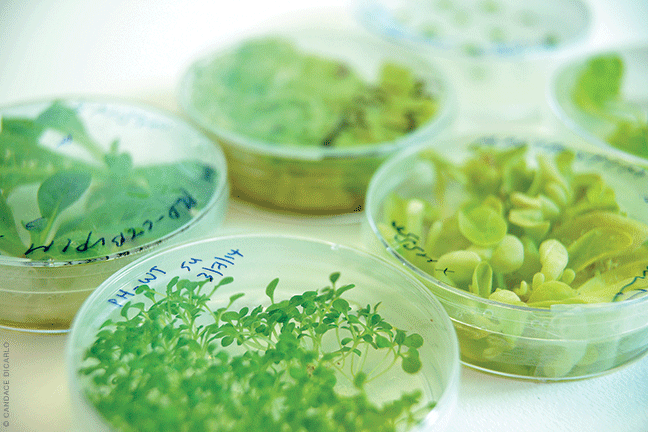
Daniell’s work is unconventional even within the mind-bending realm of genetic engineering.
The most common way scientists have produced recombinant proteins in plants is by inserting cloned genes into a plant’s nuclear genome—the DNA residing in cell nuclei. This is the bread and butter of agro-biotech giants like Monsanto and Dow, which use it to create transgenic corn, soybeans, and cotton—often with an eye toward making crops resistant to insects or herbicides.
Another strategy involves using modified viruses to effect the production of recombinant proteins in plants, without changing the nuclear genome.
By focusing on chloroplasts, Daniell has helped to pioneer a third approach. Plants have three distinct genomes: one that governs the cell from its nucleus, one that resides in a cell’s mitochondria, and one that resides in chloroplasts (which is sometimes referred to as the plastome). Mitochondria and chloroplasts are self-contained subunits of a cell that, in the deep evolutionary past, probably originated as bacteria that were engulfed by early eukaryotic cells—the building blocks of all multicellular organisms. This heritage influences the way the genomes of these organelles are passed down to offspring. Whereas an organism inherits nuclear DNA from both parents during sexual reproduction, it gets its mitochondria and chloroplasts exclusively from one parent.
Like mitochondria in humans, chloroplasts are inherited maternally in flowering plant species. Given the anxiety inspired by conventional transgenic crops—especially about their capacity to spread engineered genes to wild-type specimens nearby, a prospect that becomes even more fearsome if the genes in question produce pharmaceutical agents—maternal lineage is a big deal. It means that the foreign genetic material in Daniell’s plants is absent from their pollen, the male gamete.
“This is a totally contained system,” Daniell says. “It will never escape, and the only way we can transfer it is through the seeds.”
Chloroplasts also represent a high-volume production system. Each cell in the species Daniell focuses on contains about 100 of them, and each chloroplast carries about 100 copies of its genome. That adds up to a lot of potential protein factories.
Daniell targets them, in his Levy Center lab, by means of a Biolistic gene gun charged with helium gas pressurized to 1,300 pounds per square inch. It’s loaded with gold particles coated with cloned genes that are designed to be functional exclusively in chloroplasts.
“What we use is like a Frisbee, except that the edge of the Frisbee is like a razor blade,” he explains. Millions of these microscopic projectiles are hurled at tobacco or lettuce leaves, slicing through cell walls and, in turn, the protective membranes of chloroplasts. The foreign genes—tagged with radioactive nucleotides that serve as tracking devices—then glom onto the plant’s native DNA. When they insert themselves into the nuclear genome, those cells are discarded, along with others that didn’t capture the genes at all.
Cells showing high levels of chloroplast transformation are coaxed, with nutrients and hormones, into developing sprouts, and then roots. “Every single cell has the potential to become a whole plant,” Daniell points out. “That is the inherent nature of plant cells. We can’t take one of your skin cells and make another copy of you, but we can do that with a lettuce leaf.”
When the plants mature, they are transferred to a high-tech greenhouse the dental school financed on the South Bank campus annex. Sensors monitor everything from soil moisture to light intensity, automatically manipulating sunshades and irrigation lines to create optimal growing conditions for plants whose energies have been partially redirected away from photosynthesis. By this point the chloroplast factories are running at full tilt, fusing blood-clotting factors, proinsulin, or some other protein with a molecular chaperone designed to ferry the agent across the intestinal lining—often a neutered subunit of the cholera toxin (CTB), which is a master of intestinal breaking and entering.
Daniell’s latest effort—which yielded the first publication to come out of his Penn lab, with Penn Dental’s Neha Kohli as the lead author—went one step further. A chloroplast-derived fusion protein combining CTB with myelin basic protein crossed both the gut lining and the blood-brain barrier in mice, where it reduced amyloid plaques in the hippocampus, “an important hallmark” of Alzheimer’s Disease, as the authors of an accompanying commentary in Nature Molecular Therapy noted.
Every step up to this point requires loads of money and technical expertise. But those requirements drop precipitously as soon as the engineered plants bear seeds, which transmit identical copies of the reprogrammed chloroplasts to their progeny.
Daniell’s team is one of a select few charting this transplastomic frontier.
“Most of the published literature comes from really a couple labs, and his is one,” says Stephen Streatfield, director of scientific affairs at the Fraunhofer USA Center for Molecular Biotechnology. “It probably has produced the most in terms of literature, and probably IP [intellectual property].”
Streatfield is a specialist in plant viral vectors who has co-authored a few review papers with Daniell. (Streatfield characterizes that limited collaboration as the extent of their professional relationship.) He chalks up the relative rarity of plastomic engineering to its technical difficulty and the limited number of plants that have cooperated with the approach. So far, tobacco has been the workhorse of the field. The “fruit fly of the plant kingdom,” as it is sometimes called, grows quickly and takes readily to genetic manipulation. But its nicotine content and inedibility make it a less-than-ideal candidate for unpurified pharmaceutical agents. “One of the major things Henry has done,” Streatfield says, is to extend the approach to more species.
Currently Daniell is using a variety of lettuce called Simpson Elite. You can buy the seeds at Home Depot. They’re marketed as a slow-bolting summer-season variety with minimal bitterness. Daniell has had good luck bending them toward loftier purposes. In 2010, he coaxed lettuce chloroplasts into producing proinsulin to the tune of 53 percent of the total leaf protein. Since then, he claims to have pushed that number to nearly 75 percent.
To call this a robust performance would be an understatement. Not only does it significantly outstrip the recombinant-protein production levels typically reported in plants subjected to nuclear genome transformation; it outpaces the production of the very protein that underpins the existence of life on Earth. RuBisCO, the enzyme that initiates the Calvin cycle, by which plants transform carbon dioxide into sugar, typically accounts for between 30 and 50 percent of a leaf’s total soluble protein. In other words, Daniell isn’t just programming his chloroplasts to run a nifty little niche app on the side. He’s overhauling the whole operating system.
“We can out-engineer nature,” he proclaims. “We can make more [recombinant] proteins than the most abundant protein on Earth.”
Bending nature to one’s will is no small feat. Mastering the modern pharmaceutical marketplace, however, may be a bigger one. Daniell has already taken one stab at the business end of transplastomic engineering. Its failure goes a long way toward explaining why he ended up at Penn—and how he hopes his new academic home will help write a different ending the next time around.
In 2002, when he was professor of molecular biology at UCF, Daniell was approached by investors eager to capitalize on his technology. A biotech startup called Chlorogen was the result.
“Chlorogen was one of those wild dreams,” Daniell recalls. “When I went and made a presentation, they were so impressed that they wanted to invest $20 million right away.”
In his telling, no sooner did the money come in—$6 million to start, according to public documents—than ways were found to fritter it away. Because Florida had no biotech industry to speak of, the company was established in Missouri, home of one of the funding partners. A CEO with the wrong skill set was hired at $500,000 a year. Board dinners would feature $8,000 bottles of wine, Daniell recalls, “and I had no clue what I was doing there.” From his perspective, the leadership’s strategy was oriented toward licensing or selling the intellectual property rather than advancing it. The money, including a second $6 million funding round, ran out first.
“My lesson learned was that it’s not the money that’s important,” Daniell says now. “It’s the expertise to do the clinical translation.”
When he came to Penn last year, Daniell brought about 300 varieties of transplastomic seeds along with him. Considering that treatment or vaccination can involve multiple proteins, he estimates that this seed bank might cover “about 100” diseases—if, that is (and it’s a big if) any of them can make it to, and through, a clinical trial.
One of his seeds is a strain of low-nicotine tobacco modified to manufacture interferon—a class of drug he talks about again and again during presentations on his research. Used to fight viral infections and tumor cells, it is a very expensive treatment. A full course can cost tens of thousands of dollars.
“I’m very clear on these expenses, because a couple of my students’ family members had hepatitis C,” Daniell says. “I knew exactly how much it cost for those people … And I can imagine people in India getting stuck with some unfortunate cancer—they’d have to sell not only their own house but their grandparents’ house, and everything, in order to get a few injections.
“It doesn’t have to be that expensive,” he declares. In 2007, he published an experiment involving a side-by-side comparison of his tobacco-derived interferon (which required purification) with commercial interferon on a mouse model of lung cancer. “We showed that the plant is working as good or even better,” he says. “And we also tested it with hepatitis C and a few other viruses.
“But this is one of the reasons I moved to Penn,” he adds. “Because while Florida is good in space research and some other things, the clinical-trial and biotech sector is nonexistent there. So I got all these good results, but got very frustrated that I couldn’t take them beyond.”
The possibilities for interdisciplinary collaboration at the University have replaced that frustration with excitement. “I am an expert at making these proteins, and delivering them, and so on,” he remarks, “but I am by no means an expert in Alzheimer’s and diabetes and all these things. There are other people here who have worked for 20, 30 years on those things. So these collaborative partnerships, it’s very important for moving the platform forward.”
Platform is the key word in that sentence. So far, the only plant-derived biologic approved for clinical use is an enzyme-replacement therapy for adults with Type I Gaucher Disease, which received FDA approval in 2012. It’s manufactured by carrot-cells cultured in disposable bioreactors. Producing agents in greenhouse-based lettuce plants—grown in much the same manner as grocery-store salad greens, then simply freeze-dried and packed into pills—would be a major step forward.
To be sure, the same novelty that makes that prospect so exciting also makes it uncertain. Like any true innovation, plant-based production harbors many unknowns. To pick just one example, chloroplasts do not attach sugars to the proteins they synthesize, but mammalian cells often do. Whether that constitutes an impediment to clinical treatment, or even an advantage, is not well understood and may vary from case to case.
That said, the administrators and faculty who brought Daniell to Penn believe that act alone has brought the puzzle pieces closer to falling into place.
“I think he’s pivotal,” says Penn Dental Dean Denis Kinane. “I think he’s at the sharp end. [But] I actually don’t think that what you’re seeing from Henry on paper right now is 50 percent of his potential.
“With the quality of interactions that are feasible given the quality of the faculty at the School of Medicine, Nursing, and Veterinary Medicine, I think that he’s in a sandbox where he can really play—and make a massive difference to the development of drugs that will benefit mankind. That sounds like a big thing to say, but I think he couldn’t be in a better place than he is right now.
“I really feel that we’ve done the Penn community a service,” he continues. “We’ve brought on someone with 120-odd patents who can actually create translational research which will make a difference to humans in the future. I see a lot of that at Penn Medicine, in nursing, the vet school, and also in engineering. It’s nice to see the dental school contributing to that whole process.”
That Daniell landed in the School of Dental Medicine can be a source of puzzlement for people who don’t know the school well.
“Recruiting a botanist is certainly unusual,” allows Dana Graves, a professor of periodontics and vice dean for scholarship and research. But one thing that distinguishes Penn Dental from its peers is that it maintains its own research departments. “Most dental schools bring in outside faculties from other schools or divisions within a university to teach the basic sciences, which are done in the first two years of dental school just like they are in medical school,” Graves notes. “The dental school [at Penn] has its own faculty to do this teaching … which provides a cadre of people who also do research.”
Kinane adds that because “the vast majority” of dental diseases are microbial in origin, immunology and pathology researchers often top the school’s wish list for new faculty.
“Henry’s got the ability to create molecules which might interrupt the viral, microbial, or fungal influences on tissues,” Kinane says. “That’s very relevant to dental disease.”
As it turns out, he’s already done that. One of the proteins Daniell has made in his plants is a monoclonal antibody that “corkscrews its way through” Streptococcus mutans bacteria, the primary cause of dental caries. It’s not among his current priorities, but that’s perhaps mostly a testament to his feeling that he’s finally on the cusp of his first clinical breakthrough on a different front.
Daniell has already inspired confidence, or at least hope, in high places. The Bill and Melinda Gates Foundation is funding his development of a plant-derived, low-cost oral polio booster vaccine. The Juvenile Diabetes Research Foundation supports his research on oral delivery of plant-derived auto-antigens to prevent Type I diabetes. He’s no stranger to the National Institutes of Health. “He is taken very seriously by grant-awarding bodies and charitable trusts,” as Kinane puts it.
His leap to Penn appears to be lifting his prospects with a more important sector of the pharmaceutical ecosystem: its profit-driven capitalists. Their participation is the crucial factor in financing the huge expense of clinical trials.
Along with his seeds, Daniell brought a huge patent portfolio to the University. In an unusual deal brokered by Penn’s Center for Technology Transfer (CTT), UCF and Auburn agreed to assign—rather than license—a big chunk of the intellectual property Daniell accrued while working at those universities. Penn now controls about 25 foreign and US patents, plus about 50 pending applications.
That’s an expensive load to carry. As a rule of thumb, it costs around $30,000 to get a patent issued. And while plant patents are exempt from annual maintenance fees in the United States, foreign patents require annuity fees that escalate over a patent’s term. (For example, Germany’s fee schedule starts at 70 euros—about $95—in a patent’s third year, gradually climbing to €1,940 in the 20th.) But Penn’s outright control of the patents gives it the nimbleness to strike deals without consulting Daniell’s previous employers. So the CTT is sanguine about the return on this investment.
“Pharmaceutical and biotech companies are constantly looking for novel and cost-effective ways to express their valuable therapeutic proteins, and Henry’s work is helping to position Penn as a true development partner for these activities,” says CTT director John Swartley. “We are optimistic that Dr. Daniell’s groundbreaking work could soon result in truly innovative new medicines that are not only attractive to our commercial partners in the biopharmaceutical industry, but that also provide a tremendous benefit back to society and patients in desperate need around the world.”
So far, the CTT says it has received four or five “serious inquiries” about entering commercial partnerships based on Daniell’s patents. (Commercial partners typically assume the patent-related costs in these arrangements.) More importantly, as of the first week of April it was on the cusp of finalizing a deal with Novo Nordisk, a pharmaceutical powerhouse whose global heft could bring Daniell’s research to a critical tipping point. The terms of this collaboration, which was announced last year, were still under wraps at press time. But Daniell’s greenhouse was already full of plants growing the blood-clotting proteins that the company is interested in.
“When they’re injected with these clotting factors, [hemophilia] patients can get severe immune reactions to it—because their bodies never made it before,” he explains. “And what we have shown is that if we give this orally, the gut immune system recognizes that and sets their immune system right.”
Critically, it also dovetails with a lucrative business proposition—something that often eludes, say, a low-cost malaria vaccine.
“The good news is that the big pharma companies that are selling a billion dollars’ worth of these big-ticket proteins are eager to take this forward because they can continue to sell their proteins,” Daniell notes. “That’s not true with diabetes, because they’d have to stop selling the treatment once we begin to naturally produce insulin,” as he’s coaxed diabetic mice to do.
In Novo Nordisk, Daniell thinks he has found the partner that will finally bring his research out of the preclinical realm. He outlines an aggressive march toward Phase I trials. “We are getting very good results on dogs. So this year we’re going to chimps, and next year we’re going to humans.”
Anything could happen along the way. The vast majority of drug candidates don’t make it to clinical trials, and even fewer succeed. Truly novel approaches face the longest odds. But it’s hard to think of a pharmaceutical advance that carries a bigger potential payoff than Henry Daniell’s bright green fronds of lettuce. Success would effectively ratify a whole new platform for producing life-saving medicines—not only new ones, but existing ones that might finally reach the whole of humanity for the first time.
Conventional vaccines are astonishing things. They have saved lives for more than a hundred years. Daniell makes sure to reiterate that point as he makes his way from his upstairs office to the Levy Center’s ground floor.
“But we don’t have to depend on that system forever and ever,” he says, and strides through the gray metal door of Room 123-A.


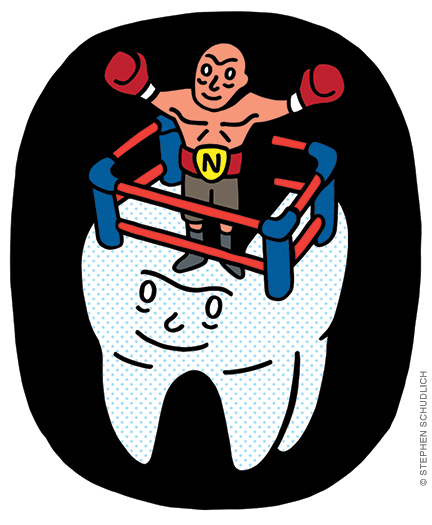
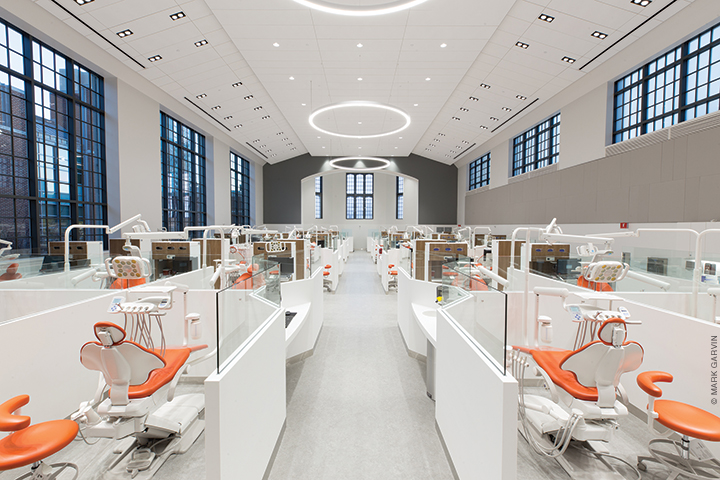
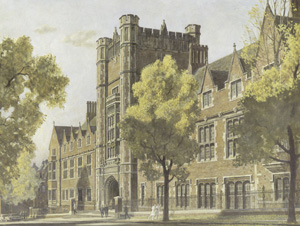
I hope Dr. Daniell is working on delivering adiponectin via oral plant delivery as well as insulin. Many of those with insulin resistance, who will progress to full blown diabetes, have hyperinsulimia as a interim step in the disease…and adiponectin is cruicial in restoring insulin sensitivity.
Does he work with Venus flytraps? I can’t think of any other plant that would need a dentist.
We, here in Florida, were VERY foolish to not provide adequate support for his research and clinical trials!!. Scientists of his caliber don’t come along every day and his discoveries could easily change our world in a good way if… the,” rip off” pharmaceutical companies stay out of the mix.
A great read. I know Dr. Daniell for long time and I follow his research. I believe he is on his way for the big grand, the Nobel Prize.